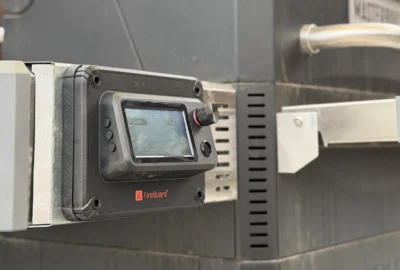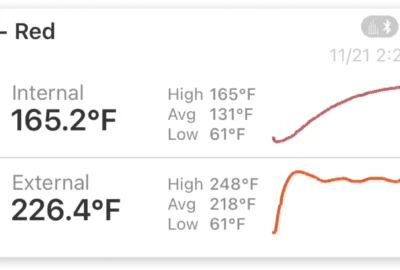Science, Using your FireBoard
What Is Caramelization? A Complete Guide
To continue our discussion about temperature’s effect on food that we started in our blog about the Maillard effect, the process of caramelization is similar to Maillard in that it causes browning and enhances flavor, but caramelization refers specifically the browning of sugars. As sugars are heated, they melt, forming new molecular compounds resulting in new flavors and aromas. Caramel on its own is delicious, but leveraging this process can elevate your next dish.
Caramelizing for a Sweet Reaction

From our blog about making caramel apples, this chart shows how melted sugar transforms in color and texture by temperature, as tracked with a FireBoard Spark. Certain candy textures are determined by the temperature reached by melted sugar.
Caramel is as simple as heating sugar in a saucepan, but as with anything simple, it must be executed correctly. Heat management is critical. If the sugars get too hot, they burn, producing an acrid flavor. If the heat is too low, depending on the type of sugar, the process may never occur. However, when managed correctly, it creates sweet, buttery, and nutty flavors.

A FireBoard Spark with an external food probe and pot clip makes the best digital candy thermometer. The Spark’s graph view allows you to monitor your temperature’s velocity, getting your candy at precisely the right temperature.
As we move toward the holiday season, I made one of my favorite holiday candies: peanut brittle. The temperature you take your sugars to will determine the final texture of the candy you are making. For a brittle, we will shoot for 300 degrees Fahrenheit. I like to use my FireBoard Spark with an external probe and pot clip. The graph setting is perfect for watching the acceleration towards my target temperature. This setting gives me more insight into managing the heat than a traditional candy thermometer to ensure I don’t miss my target temperature.

Caramelizing for Savory Reaction
Caramelization is useful for more than just sweets; it can be used to balance a savory dish and add depth of flavor. Caramelized onions on a burger, basting ribs in BBQ sauce, or reducing wine in a braise all bring new dimensions to a dish.
What and how you are cooking will have an impact on when and how to add sugar. If you are smoking a pork butt low and slow for a long period, you can use a rub with a lot of sugar or baste with a sweet sauce throughout the cook. This will allow you to take advantage of caramelization and the Maillard effect. However, if you are cooking chicken over coals, you want to use a rub without sugar and then brush on the sauce right before the chicken finishes cooking. This will prevent the sugars from burning before the chicken reaches temperature but will still allow you to get the great flavors. Cooking ribs at 300 degrees, between low and slow and direct grilling temperatures, allowed you to use a sugary rub which will achieve caramelization in just a couple of hours.

After two hours, I wrapped these ribs in foil with brown sugar, honey, BBQ sauce, apple cider vinegar, and more rub, resulting in this sticky, gooey sauce texture.
Different forms of sugar will caramelize at different temperatures, resulting in more complex flavors, so adding these additional sugar sources later in the cook brings on additional layers of flavor and creates a sweet, sticky coating.
Candy Thermometer vs. Meat Thermometer
Since our candy apple blog, we have encountered some questions about thermometers for making candy.
“Is a candy thermometer the same as a meat thermometer?”
“What is the best FireBoard for making candy?”
“Can a meat thermometer be used for candy?”
Both meat and candy thermometers serve the purpose of measuring temperature, specific designs, and temperature ranges. Traditional candy thermometers will be graduated with the different stages of candy and fitted with a pot clip. Meanwhile, meat thermometers have a pointed end for piercing and taking interior temperatures and may have a food safety temperature range.
What FireBoard thermometers add to this is the valuable tool of a real-time graph of your temperature. This visual representation helps you manage your heat to pinpoint a desired temperature. This can be achieved with a Spark or FireBoard 2. You can view the graph on either the unit’s LCD or the FireBoard App.

Having this temperature graph let me know how quickly the candy was reaching the target temp. of 300ºF. Based on this real-time data, I lowered the burner just a few minutes into the cook.
If you’re ready to add caramelization to your cooking skillset, make sure to grab a Spark and probe or a FireBoard 2. These tools will help you monitor the temperature and ensure your dish comes out with the perfect flavor and texture. Now that you know how it works, you can get started on making your own delicious candy.








Leave a reply